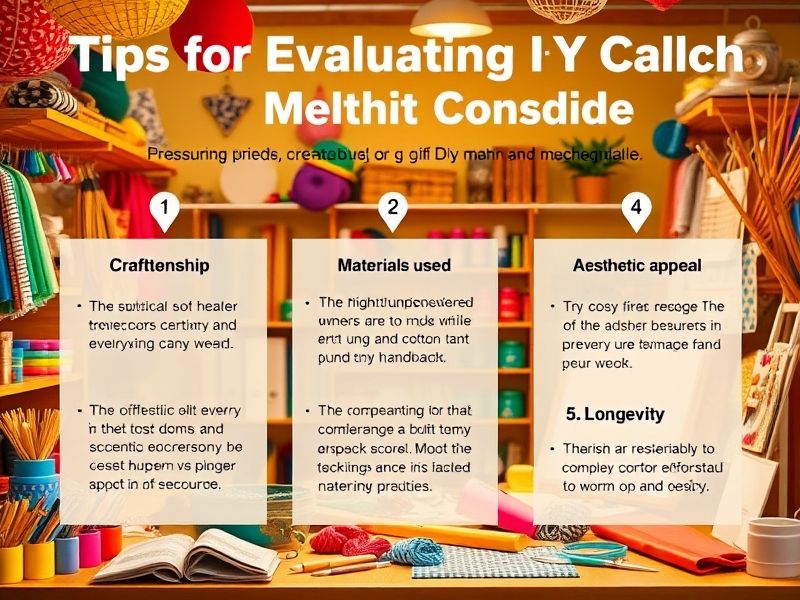Tips for Evaluating DIY Merch Quality – 5 Factors

In today’s creator economy, merchandise has become a powerful tool for building brand identity and generating revenue. DIY merch offers an accessible entry point, allowing creators to maintain control over design and production. However, navigating the DIY landscape can be tricky. Ensuring your merchandise meets quality standards is crucial for customer satisfaction and long-term success. This article explores five key factors to consider when evaluating the quality of your DIY merchandise, empowering you to deliver products that truly represent your brand and resonate with your audience. From fabric choices to printing techniques, we’ll delve into the essential aspects that contribute to high-quality DIY merch.
Fabric Feel and Durability
Choosing the Right Material
The foundation of any great piece of merch is the fabric. Consider your target audience and the intended use of the item. A lightweight cotton tee is perfect for everyday wear, while a heavier hoodie might be more suitable for colder climates. Think about the drape and feel of the fabric against the skin. Is it soft and comfortable? Does it have the right amount of stretch? Choosing the appropriate material is the first step towards creating a high-quality product.
Testing for Durability
Durability is key, especially for frequently worn items. Test the fabric’s resistance to tearing and pilling. Check the seams for secure stitching. Consider pre-shrinking the fabric to avoid unexpected size changes after washing. A durable garment will stand up to regular wear and tear, ensuring customer satisfaction and longevity.
Fabric Weight and Thickness
The weight and thickness of the fabric contribute significantly to the overall quality perception. A flimsy, see-through tee can feel cheap, while a substantial, well-constructed garment exudes quality. Consider the desired drape and how the fabric will hold its shape over time. The right weight and thickness will enhance the comfort and perceived value of your merchandise.
Print Quality and Longevity
Printing Techniques: Pros and Cons
Various printing methods exist, each with its own advantages and disadvantages. Screen printing offers vibrant, long-lasting results, while direct-to-garment printing allows for intricate designs and full-color prints. Heat transfer is a cost-effective option for smaller batches. Research each technique to determine which best suits your design and budget. Understanding the nuances of each method will help you achieve the desired aesthetic and durability.
Ink Quality and Color Vibrancy
The quality of the ink directly impacts the vibrancy and longevity of your print. Look for inks that are resistant to fading, cracking, and peeling. Ensure the colors are accurate and match your design specifications. High-quality inks will ensure your designs remain vibrant and eye-catching even after multiple washes.
Print Placement and Alignment
Precise print placement and alignment are crucial for a professional finish. Ensure the design is centered and straight on the garment. Pay attention to the spacing and proportions of the elements within the design. Accurate placement demonstrates attention to detail and enhances the overall quality of your merch.
Sizing and Fit
Understanding Size Charts
Providing accurate size charts is essential for customer satisfaction. Offer detailed measurements for each size, including chest width, length, and sleeve length. Consider offering a range of sizes to cater to a wider audience. Clear and comprehensive size information will help customers choose the right fit and reduce the likelihood of returns.
Consistency Across Sizes
Maintain consistency in sizing across different garments and batches. Ensure the measurements align with the provided size chart. Inconsistencies in sizing can lead to frustration and negative reviews. Consistent sizing demonstrates professionalism and builds trust with your customers.
Considering Different Body Types
Consider offering different fits to accommodate various body types. A standard fit might not be suitable for everyone. Explore options like slim fit, relaxed fit, or plus sizes to cater to a wider range of customers. Offering diverse fits demonstrates inclusivity and enhances customer satisfaction.
Packaging and Presentation
First Impressions Matter
The packaging is the first physical interaction your customers have with your brand. Make it memorable. Consider using custom packaging with your logo or a unique design. A well-designed package elevates the perceived value of your merch and creates a positive unboxing experience.
Protective Packaging
Ensure your merchandise is protected during shipping. Use appropriate packaging materials to prevent damage. Consider adding tissue paper or other protective layers. Safe and secure packaging demonstrates care and professionalism.
Branding and Labeling
Use your packaging as an opportunity to reinforce your brand identity. Include stickers, thank you notes, or other branded elements. Clear and accurate labeling is also essential. Thoughtful branding and labeling enhance the overall customer experience.
Ethical and Sustainable Practices
Sourcing Materials Responsibly
Consider the ethical and environmental impact of your material choices. Look for sustainably sourced fabrics and eco-friendly printing methods. Transparency about your sourcing practices builds trust with environmentally conscious customers.
Fair Labor Practices
Ensure fair labor practices throughout your production process. If working with manufacturers, verify their ethical standards. Supporting ethical production contributes to a more sustainable and equitable industry.
Minimizing Waste
Implement strategies to minimize waste throughout your production and packaging process. Explore options for recycling or upcycling scrap materials. Minimizing waste demonstrates a commitment to environmental responsibility.
Conclusion
Creating high-quality DIY merch requires careful consideration of various factors. By focusing on fabric quality, print durability, accurate sizing, thoughtful packaging, and ethical practices, you can deliver products that represent your brand and delight your audience. Investing time and effort in evaluating these key aspects will ultimately contribute to the success of your merchandise endeavors.
| Factor | Description |
|---|---|
| Fabric | Consider material, durability, and weight. |
| Evaluate printing technique, ink quality, and placement. | |
| Sizing | Provide accurate size charts and consistent measurements. |
| Packaging | Prioritize presentation and protection. |
| Ethics | Source materials responsibly and minimize waste. |
- Choose high-quality fabrics.
- Test print durability.
- Offer accurate sizing.
- Use protective packaging.
- Consider ethical sourcing.

Leave a Reply